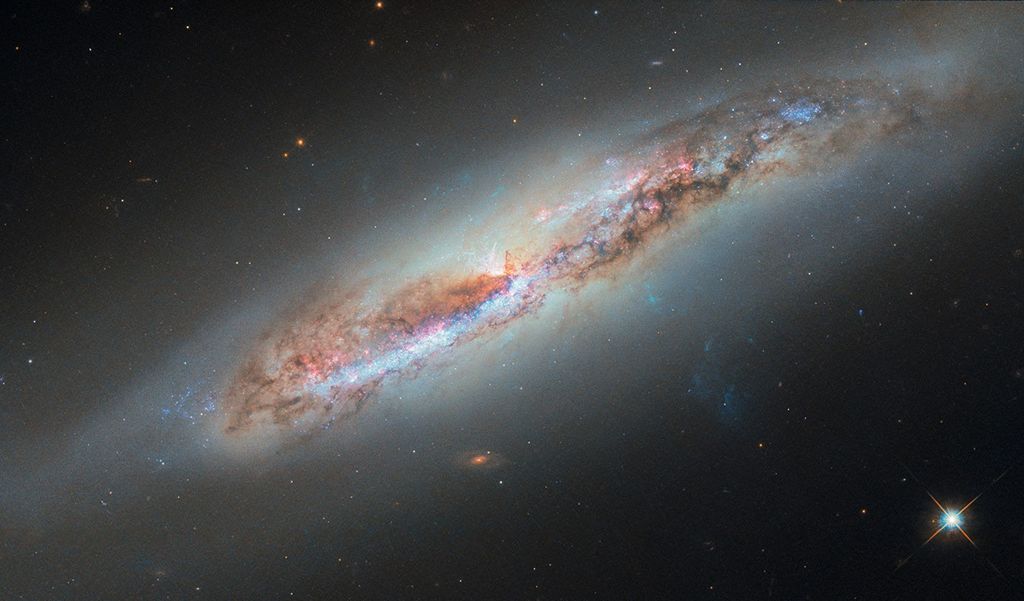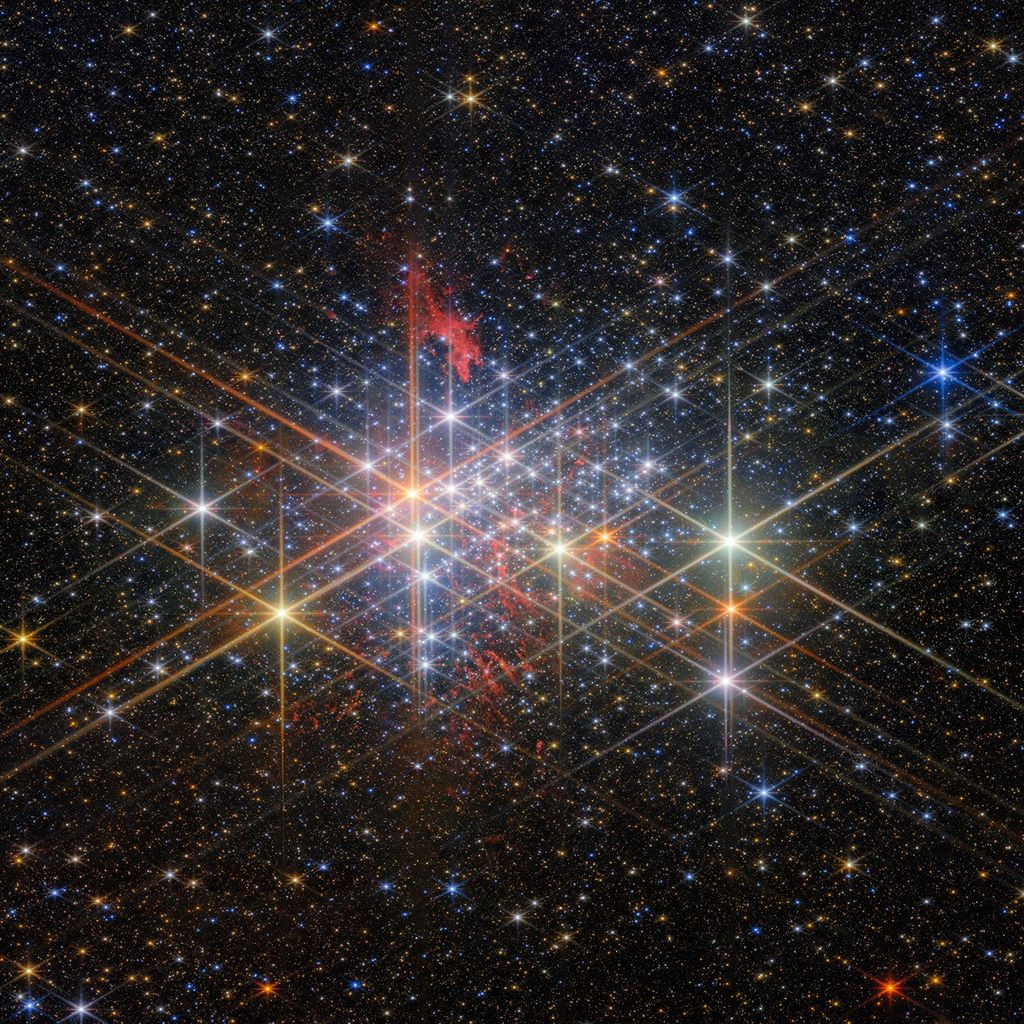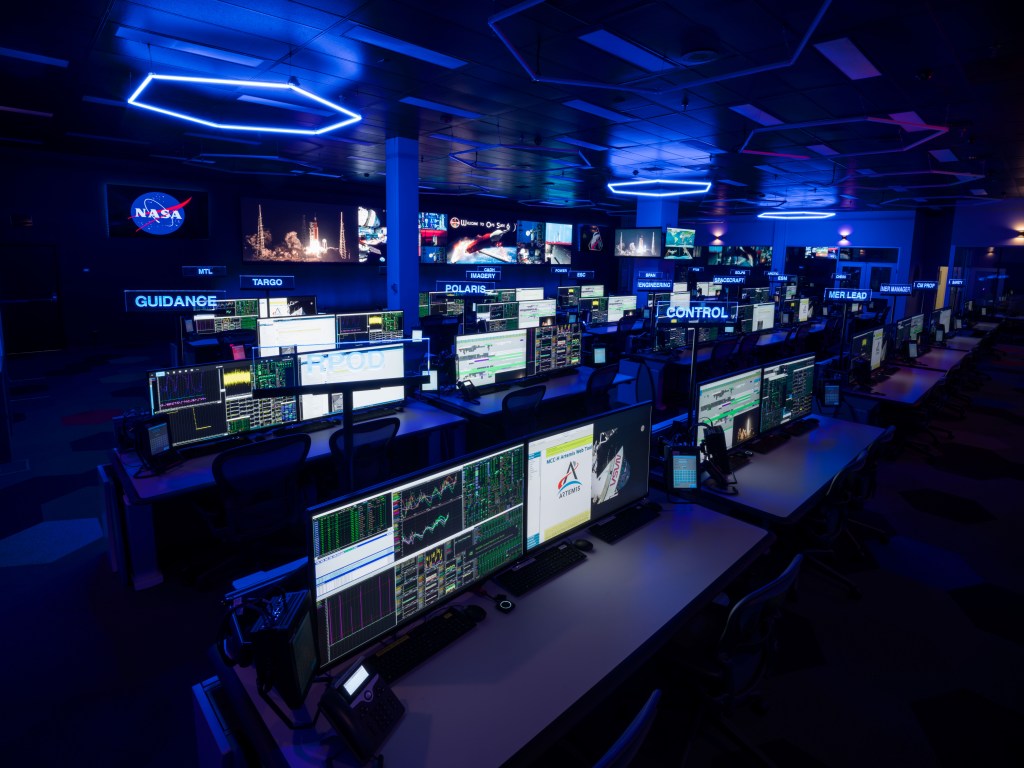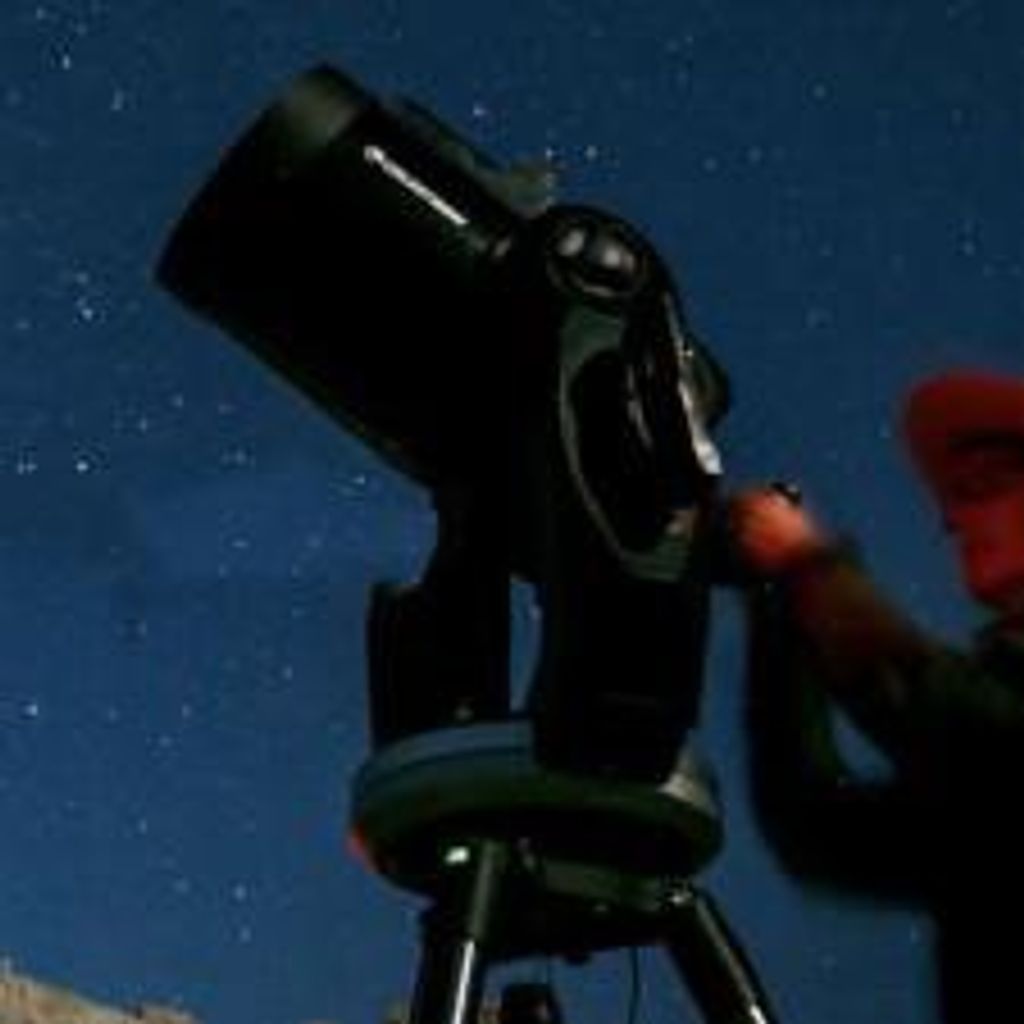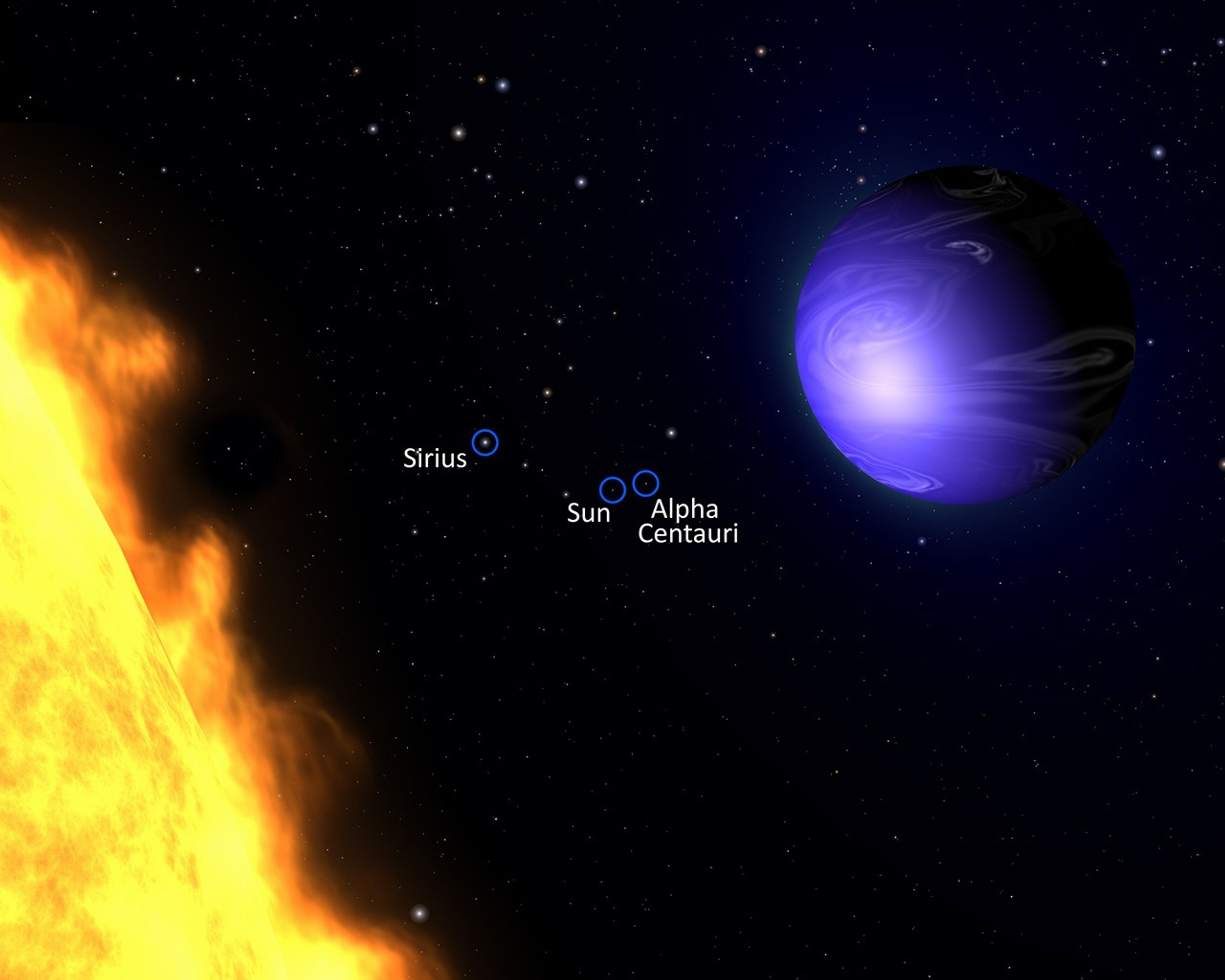1 min read
Artist’s View of Extrasolar Planet HD 189733b
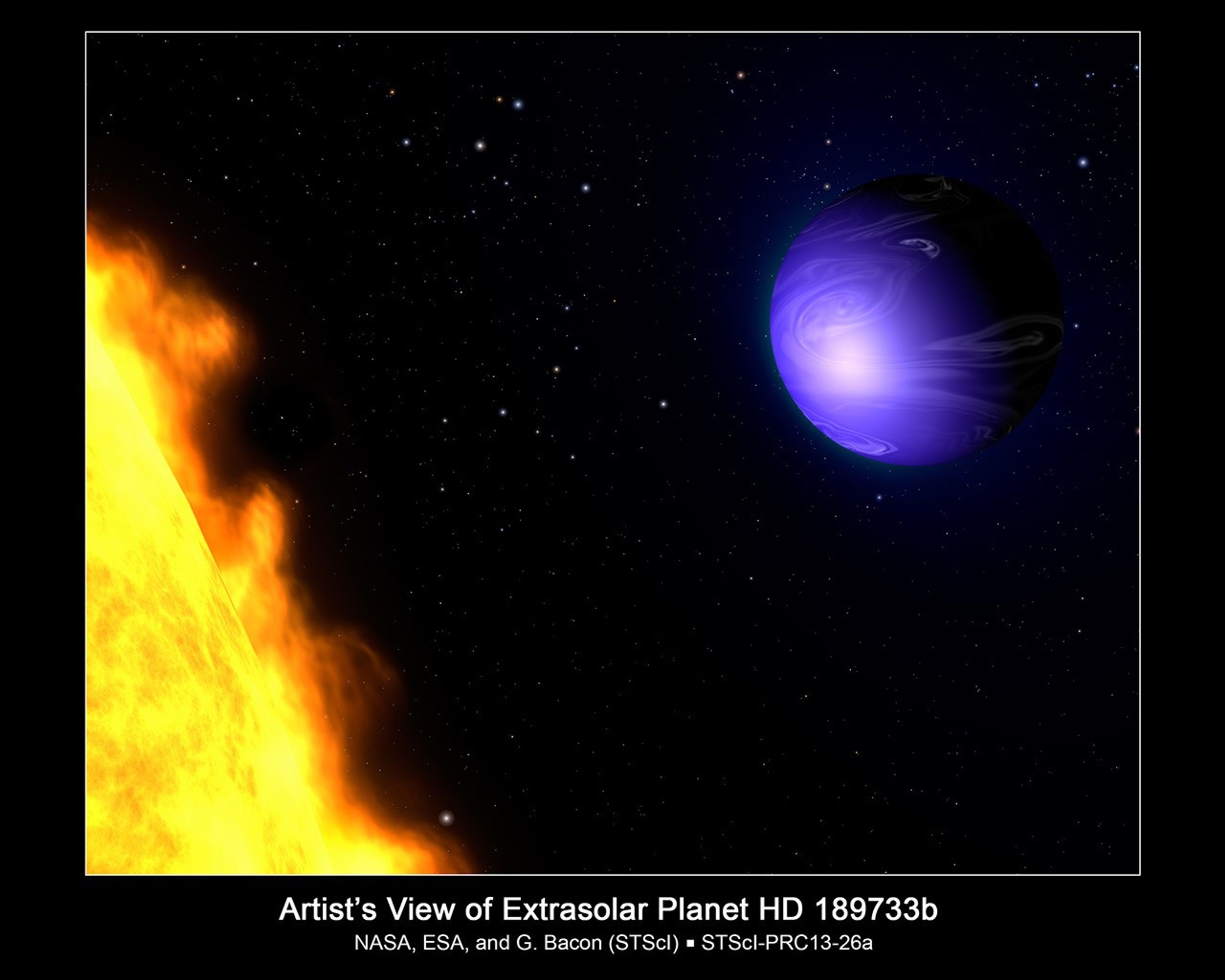
This illustration shows a hot-Jupiter-class planet orbiting its yellow-orange star, HD 189733. NASA's Hubble Space Telescope measured the actual visible-light color of the planet, which is deep blue. This color is not due to the presence of oceans, but is caused by the effects of a 2,000-degree-Fahrenheit atmosphere where silicate particles melt to make "raindrops" of glass that scatter blue light more than red light.
The planet HD 189733b was discovered in 2005 and is only 2.9 million miles from its parent star. The planet is so close to its star that it is gravitationally "tidally locked" so that one side always faces the star and the other side is always dark. In 2007 NASA's Spitzer Space Telescope made a thermal map that identified the presence of an early afternoon hotspot on the planet, as shown here. High-altitude clouds, laced with silicates, may blow from the day side to the night side at 4,500 miles per hour.
Because the planet is only 63 light-years from Earth, a visitor would see many of the same stars we see in our nighttime sky, though the constellation patterns would be different. Our Sun and the nearest star to our Sun, Alpha Centauri, appear as two faint stars near image center.
About the Object
- R.A. PositionR.A. PositionRight ascension – analogous to longitude – is one component of an object's position.20h 00m 43s.70
- Dec. PositionDec. PositionDeclination – analogous to latitude – is one component of an object's position.+22° 42' 39".07
- ConstellationConstellationOne of 88 recognized regions of the celestial sphere in which the object appears.Vulpecula
- DistanceDistanceThe physical distance from Earth to the astronomical object. Distances within our solar system are usually measured in Astronomical Units (AU). Distances between stars are usually measured in light-years. Interstellar distances can also be measured in parsecs.63 light-years (19 parsecs)
About the Data
- Data DescriptionData DescriptionProposal: A description of the observations, their scientific justification, and the links to the data available in the science archive.
Science Team: The astronomers who planned the observations and analyzed the data. "PI" refers to the Principal Investigator.The image was created from Hubble data from proposal 13006: F. Pont (University of Exeter), H. Knutson (Caltech), D. Sing (University of Exeter), S. Aigrain (University of Oxford), A. Lecavelier des Etangs (Institut d'Astrophysique de Paris), J.-M. Desert (Caltech), and K. Heng (ETH, Zurich). The science team comprises of: F. Pont (University of Exeter), T. Evans (University of Oxford), D. Sing (University of Exeter), S. Aigrain and J. Barstow (University of Oxford), J.-M. Desert (Caltech), N. Gibson (European Southern Observatory), K. Heng (University of Bern), H. Knutson (Caltech), and A. Lecavelier des Etangs (Institut d'Astrophysique de Paris). - InstrumentInstrumentThe science instrument used to produce the data.HST>STIS
- Exposure DatesExposure DatesThe date(s) that the telescope made its observations and the total exposure time.December 20, 2012
- FiltersFiltersThe camera filters that were used in the science observations.G430L
- Object NameObject NameA name or catalog number that astronomers use to identify an astronomical object.HD 189733b
- Object DescriptionObject DescriptionThe type of astronomical object.Artist impression of Jupiter-like exoplanet
- Release DateJuly 11, 2013
- Science ReleaseNASA’s Hubble Finds a True Blue Planet
- CreditIllustration: NASA, ESA, and G. Bacon (STScI); Science: NASA, ESA, F. Pont (University of Exeter), T. Evans (University of Oxford), D. Sing (University of Exeter), S. Aigrain and J. Barstow (University of Oxford), J.-M. Desert (Caltech), N. Gibson (European Southern Observatory), K. Heng (University of Bern), H. Knutson (Caltech), and A. Lecavelier des Etangs (Institut d'Astrophysique de Paris)
Related Images & Videos
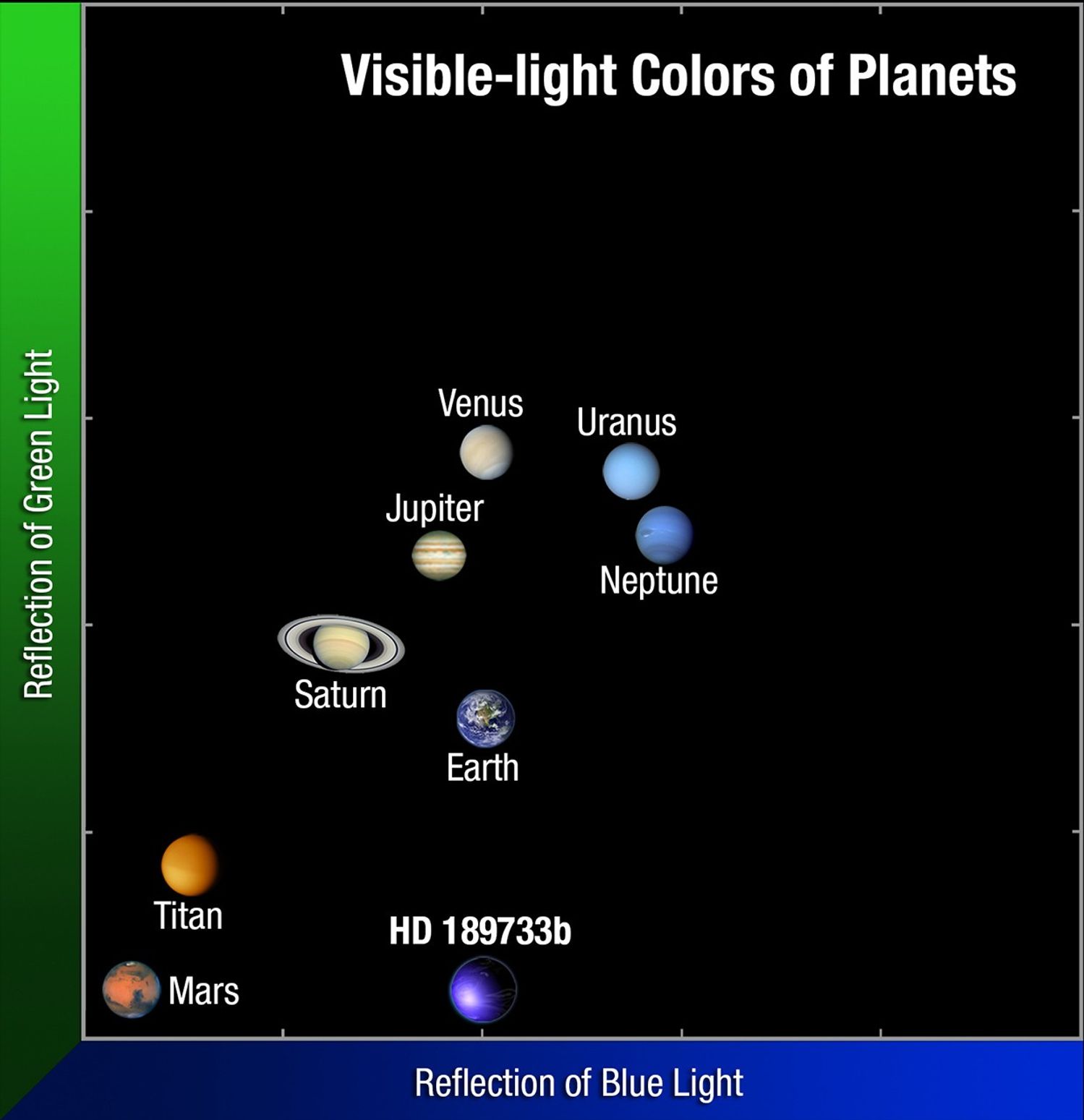
Visible-light Color of Planets Plot
This plot compares the colors of solar system planets to the color of the hot-Jupiter-class planet HD 189733b. With the exception of Mars, the colors are primarily determined by the chemistry of the planets' atmospheres. Earth's blue atmosphere plus the blue tint of the oceans...
Share
Details
Claire Andreoli
NASA’s Goddard Space Flight Center
Greenbelt, Maryland
claire.andreoli@nasa.gov

